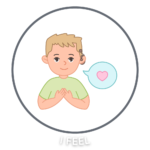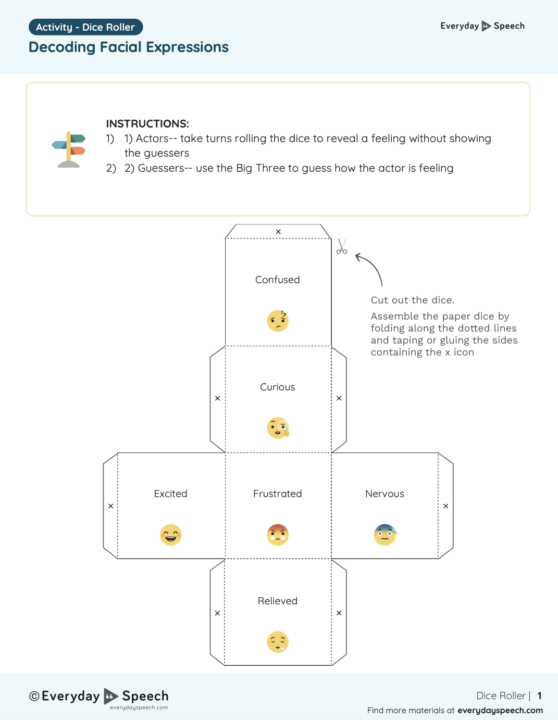
In the nuanced world of high school special education, where educators strive to meet diverse learning needs with creativity and compassion, understanding emotions plays a pivotal role. Recognizing and responding to feelings and facial expressions can significantly impact students’ social skills and emotional intelligence. This blog explores an innovative teaching tool: the Feelings and Facial Expressions Dice Roller Activity. Designed to engage and educate high school special education students, this interactive (or printable) activity offers a dynamic approach to learning about emotions.
The Importance of Emotional Recognition
Emotional recognition is a critical skill for all students, especially those in special education programs. It enables individuals to navigate social interactions, build relationships, and express their feelings in healthy ways. For high school students, who are navigating the complex world of adolescence, mastering this skill is essential for personal development and success beyond the classroom.
Introducing the Feelings and Facial Expressions Dice Roller Activity
The Feelings and Facial Expressions Dice Roller Activity is a versatile tool that brings the complex topic of emotional recognition to life. Whether you’re using an interactive digital version or a printable set of emoji dice, this activity provides a hands-on approach to learning. Students roll the dice to land on an emoji representing a specific feeling, then engage in discussions or role-plays to explore the emotion further. This method not only makes learning about feelings fun but also encourages empathy and emotional awareness among students.
How the Dice Roller Activity Works
- Preparation: Choose between the interactive digital version or the printable emoji dice. For the printable version, assemble the dice by cutting out and taping the template.
- Roll the Dice: Students take turns rolling the dice, either by clicking a button in the interactive version or physically rolling the printed dice in a classroom setting.
- Identify the Feeling: Each face of the dice represents a different emotion, displayed through a unique emoji. The student who rolls the dice identifies the emotion shown.
- Discussion and Role-Play: Following the roll, a student acts out the feeling. Students then take a guess as to what feeling it may be. Students can also share personal experiences related to the emotion, discuss scenarios where someone might feel this way, or role-play situations to express how they would respond.
- Reflection: Conclude the activity with a reflection phase where students discuss what they learned and how they can apply this knowledge in real-life interactions.

Implementing the Activity in Your Classroom
Customize the Experience
Adapt the activity to suit your students’ needs and preferences. For instance, you can select specific emotions to focus on or adjust the complexity of the discussions and role-plays based on your students’ developmental levels.
Encourage Participation
Create a supportive environment where all students feel comfortable expressing their thoughts and feelings. Encourage students to share but also respect their choice to pass if they’re not ready to participate.
Integrate Technology
If using the interactive version, take advantage of technology to enhance engagement. The digital dice roller can be projected onto a screen for the whole class to see, making the activity more inclusive and visually stimulating.

Provide Supportive Feedback
As students share and role-play, offer constructive feedback and positive reinforcement. Highlight the importance of empathy and understanding in all social interactions.
Unlock access to the interactive dice roller by signing up for your free trial today – no credit card required!
I want access to Emoji Dice Roller!
Instant access to thousands of no-prep social skills activities, over 800+ video lessons, and engaging games designed to enhance learning and development.
Conclusion
The Feelings and Facial Expressions Dice Roller Activity presents a unique opportunity for high school special educators to enhance their students’ understanding of emotions in a fun, interactive way. By integrating this activity into their teaching strategies, educators can foster a more empathetic, aware, and emotionally intelligent student community. Encouraging students to recognize and express their feelings through facial expressions paves the way for richer social interactions and personal growth, both inside and outside the classroom.
Sample Video
Students learn best from watching real students their own age model skills. Try out this sample video lesson. We offer our entire Social-Emotional Learning platform free for 14 days here!
Related Blog Posts:
Teaching Problem-Solving Skills through Social-Emotional Learning
Teaching Planning to Elementary Students: Strategies and Activities









